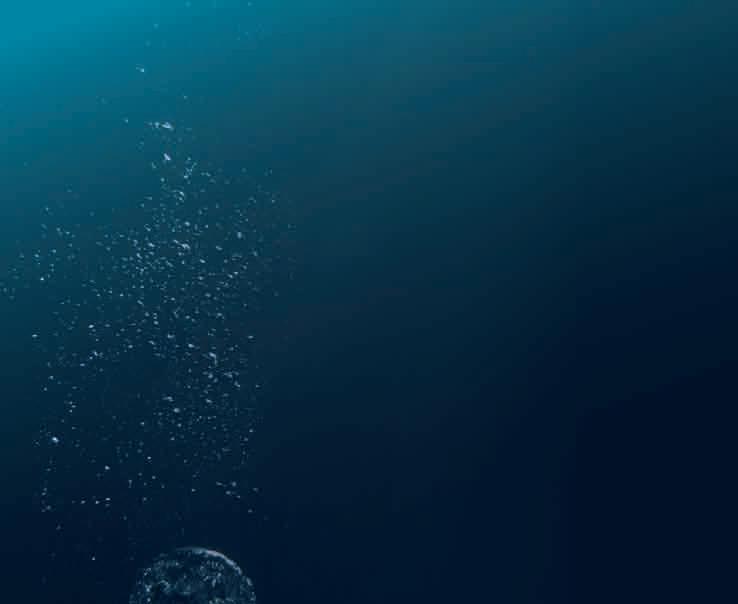
6 minute read
A challenging future
GRONINGEN SEAPORTS, LOCATED IN THE NORTH OF THE NETHERLANDS CLOSE TO LOTS OF OFFSHORE WIND PROJECTS, HAS MANY ASSETS FOR SERVICING OUR INDUSTRY. WITH THE CONSTRUCTION OF THE new BOW Terminal at Eemshaven nearing completion, the port will further strengthen its proposition.
ALL PHOTOS COURTESY OF BOW TERMINAL UNLESS STATED OTHERWISE.
Preparation of the terrain for carrying loads up to 30t per m 2 .

With the current uncertain market situation, it looks as though the terminal will soon be off to a false start. Managing Director of BOW Terminal Ludolf Reijntjes acknowledges that the timing might seem bad. “So far, with various windfarms under construction, the offshore wind business is still ongoing”, he states. “However, it remains uncertain what will happen when, due to the many COVID-19 restrictions, producers may no longer be able to supply the industry with the parts and pieces needed. This could result in serious delays. The inability to change crews of, for example, the offshore installation and heavy lift vessels, might also cause problems. If this situation lasts too long, it may lead to postponing projects, which will weigh heavily on the industry.”
Good faith Still, Mr Reijntjes knows that the current market situation will not affect the future success of the new terminal. According to him, the longer term has always been the reference point for its shareholders. “When looking at our new terminal,” he continues, “we have good faith. Our shareholders have decided to invest in Eemshaven with the knowledge that in the upcoming decade, many offshore windfarms will be constructed in the North Sea and that the Eemshaven location has ample benefits when looking at these projects. It is true that if an opportunity arises for renting our terminal, we will not let this pass, though our aim is to first finish the terminal. Only after that will we start promoting this new facility on a higher level.”
Hornsea Two Our con-colleagues in Eemshaven recently announced that it has been granted the contract to act as base port for the construction of Hornsea Two, and Mr Reijntjes admits that this was a bit of a disappointment to him. “I think that with our new terminal, we would have been an excellent partner for DEME in this project. Nevertheless, like in any business, you win some, you lose some and meanwhile we have been offering our con-colleagues our help in case they need it. I am convinced that whenever possible, working together instead of working against each other will make the proposition of BOW Terminal Eemshaven even stronger. In the end, we will all profit from this.”
Sixteen meter draught The construction of the new BOW Terminal is well underway. “In Eemshaven we will have a terrain of 10ha available, with an option of an additional 12ha”, comments Mr Reijntjes. “Quay length is 525m, of which we are allowed to use 220m on an exclusive >>
BOW Terminal’s shareholders have decided to invest in Eemshaven with the knowledge that in the upcoming decade, many offshore windfarms will be constructed in the North Sea and that the Eemshaven location has ample benefits when looking at these projects.

The Original and the Best

Efficient MODULAR design
Adaptable | Compatible | Portable
Technical Experts
A team of in-house engineers and specialists, with over 200 years combined experience
New State of the Art Factory
Faster turnaround times, increased storage space and all of your technical experts under one roof
Global Distribution Network
To find your nearest visit Modulift.com

Innovating the lifting industry
we design create innovate



WWW.DEHOOP.NET For more information contact
00 44 1202 233 844 sales@modulift.com www.modulift.com





Photo courtesy of maritimephoto.com.
Ludolf Reijntjes, Managing Director of BOW Terminal, “Over here in the north of the Netherlands, we can build up a strong position as there are not many competing ports around us that can offer the same services.”

basis. We finished upgrading this 220m at the end of last year. Instead of 5t per m 2 , we can now handle 10t per m 2 .” This will also help to raise the terrain to the same level as the quay. The contractor is now preparing the terrain for carrying loads up to 30t per m 2 . For this the terrain will be covered with a 1.20m thick layer of granulate. After this, an asphalt top layer will be laid out. The floor of the basin also
BOW also has a large terminal in Vlissingen (North Sea Port).

needs preparation for receiving jack-up vessels. Once operational, we will have a draught of 16m alongside our terminal, which is quite unique for offshore ports.” The terminal will be fully operational in July. “At the end of June or early July, the entire quay and terrain will be ready to use. Our first plan was to prepare 5ha at a time, but we decided to finish the total 10ha in one go. Apart from this, we need to make the terminal ISPS proof and arrange office space. We will use a temporary building for the time being. By the time we will have our launching customer, we expect to opt for a more definite office. As a family-owned company, we are still cautious about spending our money”, says Mr Reijntjes with a smile.
High potential According to Mr Reijntjes, BOW is aiming at various markets with the terminal at Groningen Seaports. “With our new facility, we can offer services to a broad range of activities in the oil & gas, renewables, and decom market, but is obvious that the offshore wind today has the highest potential for us. Over here in the north of the Netherlands, we can build up a strong position as there are not many competing ports around us that can offer the same services. From this location, we can assist in projects in Danish, Dutch, German, and UK waters. For the UK it is however true that competing might become more difficult for us if the UK decides to follow the Scottish example of the government heavily promoting local contribution for UK offshore windfarms. I find it strange that we still have no level playing field in Europe.”
Vlissingen Apart from the Eemshaven at Groningen Seaports, BOW also has a large terminal in Vlissingen (North Sea Port). This terminal is presently almost fully occupied by MHI Vestas. Their project will end at the end of the year, and the terminal will have space for new assignments. “With both terminals, one in the north and one in the south of the Netherlands, we are perfectly located towards the southern and northern part of the North Sea and beyond”, Mr Reijntjes says. “With a pipeline full of new planned windfarms, we are confidently looking forward to a challenging and healthy future.”










